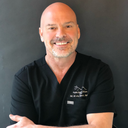Because of the potential for sexual side effects from oral finasteride (Propecia and generic forms), many patients and physicians are seeking an alternative to the FDA-approved version. The good news is that there ARE some peer-reviewed studies are reporting that there is some efficacy with topical versions of finasteride (see below). In addition, many of these studies also support the theory that there is a lower/absent load of finasteride in the serum, and lower/absent sexual side effects with topical finasteride.



